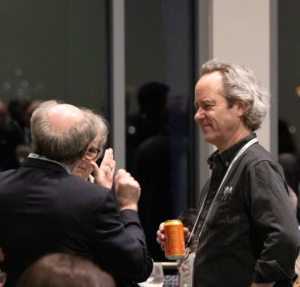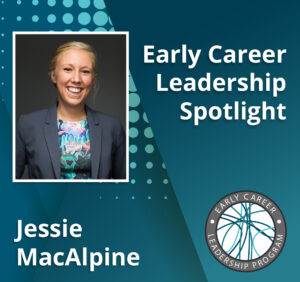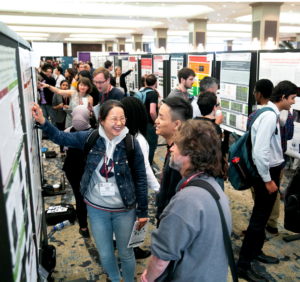Enter your address to receive notifications about new posts to your email.
Featured
-
Featured
Congratulations to the #TAGC24 Poster Award winners!
We are pleased to announce the recipients of the GSA Poster Awards for posters presented at The Allied Genetics Conference 2024! Undergraduate and graduate student members of GSA were eligible for the awards, and a hard-working team of judges made the determinations. Congratulations to all! Faith Akoachere, Syracuse University Functional characterization of systemic RNA interference in…
-
Featured
Cracking the pear genome: how students helped unlock a new tool for the pear industry
Pears are big business in the United States’ Pacific Northwest. But did you know that traditional pear breeding has remained largely unchanged for centuries? This slow process is difficult and costly, requiring the long-term commitment of labor, materials, and land-space resources. However, traditional pear breeding might get some help from genomics, thanks to a unique…
-
Featured
Genome engineering hybrid symposia: Bridging the gap between experts and enthusiasts
Advances in genome engineering are of broad interest (e.g., 2020 Nobel Prize in Chemistry); however, since they occur at a rapid pace, it’s difficult for scientists to stay up to date. Attending conferences is crucial for learning about cutting-edge advances, but accessibility barriers such as travel and registration costs exist. Additionally, while principal investigators are…
-
Featured
Early Career Leadership Spotlight: Jessie MacAlpine
We’re taking time to get to know the members of the GSA’s Early Career Scientist Committees. Join us to learn more about our early career scientist advocates. Jessie MacAlpineCommunication and Outreach SubcommitteeUniversity of Toronto Research Interest I am passionate about using molecular genetics to understand fundamental biology. During my undergraduate studies at the University of Toronto,…
-
Featured
Early Career Leadership Spotlight: Daniela C. Soto
We’re taking time to get to know the members of the GSA’s Early Career Scientist Committees. Join us to learn more about our early career scientist advocates. Daniela C. Soto Communication and Outreach SubcommitteeUniversity of California, Los Angeles Research Interest What genetic changes underlie our uniquely human traits and behaviors? In the last couple million years…
-
Featured
Poster presentation tips for TAGC 2024
You’ve been selected to present a poster at The Allied Genetics Conference 2024 in March—you’ve celebrated, made plans to attend, now what? This is an exciting opportunity to showcase your research and engage with fellow members of the genetics community, so you want to make sure you’re prepared. We wanted to offer you some tips…
-
Featured
May the fourth be with you: Drosophila’s dot chromosome is open for business
New tools published in GENETICS enable researchers to study genes on the elusive fourth chromosome.
-
Featured
Planting a seed for peanut diversity
Crunchy vs. smooth? Try fastigiata vs. hypogae. Mobilizing peanut diversity on smallholder farms can help improve global food production.
-
Featured
Maximize your TAGC 2024 experience
A guide to all that National Harbor & DC have to offer Are you joining us for The Allied Genetics Conference 2024 in March? Make the most of your #TAGC24 experience in National Harbor! We know the science will keep you busy, but you deserve to unwind and have some fun, so we’ve curated a…
-
Featured
Help us make science easy to understand, for all!
Have you ever felt confused or excluded due to hyperspecialized terminology in the field? When you’re explaining your research to non-scientists, does jargon get in the way? You’re not alone! Help us break down barriers and build a bridge to scientific knowledge with your input. Welcome to our Index of Jargon campaign! How can you…
-
Featured
Congratulations to the 2024 Early Career Leadership Program Cohort!
The Genetics Society of America (GSA) is excited to announce the latest cohort of student, postdoc, and early-career research leaders joining the Early Career Leadership Program. Participants receive training and mentoring while serving on committees charged with understanding the needs, interests, concerns, and challenges of early career scientist members of the GSA. As part of…











